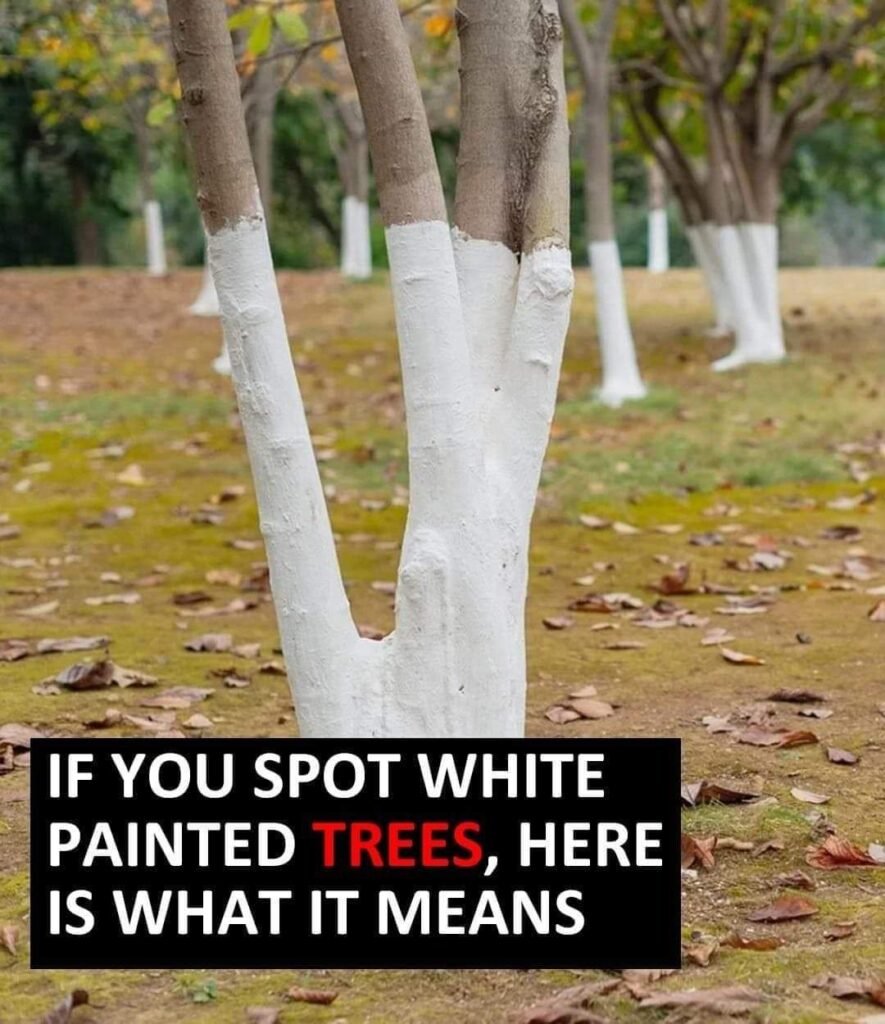
You may have noticed that the lower trunks of some trees are painted white. This is to shield the bark from sunscald, a condition similar to sunburn in plants. Sunscald commonly occurs in winter when fluctuating temperatures—from cold nights to sunny days—can damage the bark. The white paint helps prevent the tree from overheating and cracking. Cracked bark can expose the tree to diseases, fungi, and pests.“This type of painting is usually done on young, thin-barked residential trees or in orchards,” explains Christopher Evans, an extension forestry and research specialist at the University of Illinois Urbana-Champaign. “The white paint helps moderate daytime heating of the bark and reduces the risk of sunscald.” This treatment is typically only needed for younger trees until they become more resilient. Additional Reasons for Painting Trees
You might also see trees with various paint markings. While white paint serves to protect bark, other colors and patterns convey different instructions. For example, some trees are marked to indicate disease, the need for removal, or pruning requirements. “Paint marks trees in a subtle way,” says Ken Fisher, assistant forester for the Boulder Parks and Recreation Department. “Many people don’t even notice, but it alerts our contractors to the specific tree in question. We’ve been using paint dots for around 25 years, so some trees might have several dots.” However, different cities may have their own codes, so colors like red or purple could signify different things depending on the location.In forests and nature trails, you might encounter paint jobs indicating hazardous or safe trees. They can also mark private hiking trails or provide environmental information. “In some areas, trees with nests of rare or endangered species are marked,” notes Evans. “For example, in the Southern United States, nests of the federally endangered red-cockaded woodpecker are typically marked with a white paint ring.” However, it’s essential to check local guidelines before making assumptions, as there is no universal standard for marking paint in forestry. Some symbols and colors are more widely understood, like an X, which often signifies a tree to be cut, and numbers indicating a tally before a harvest. In many states, purple paint marks private property.


